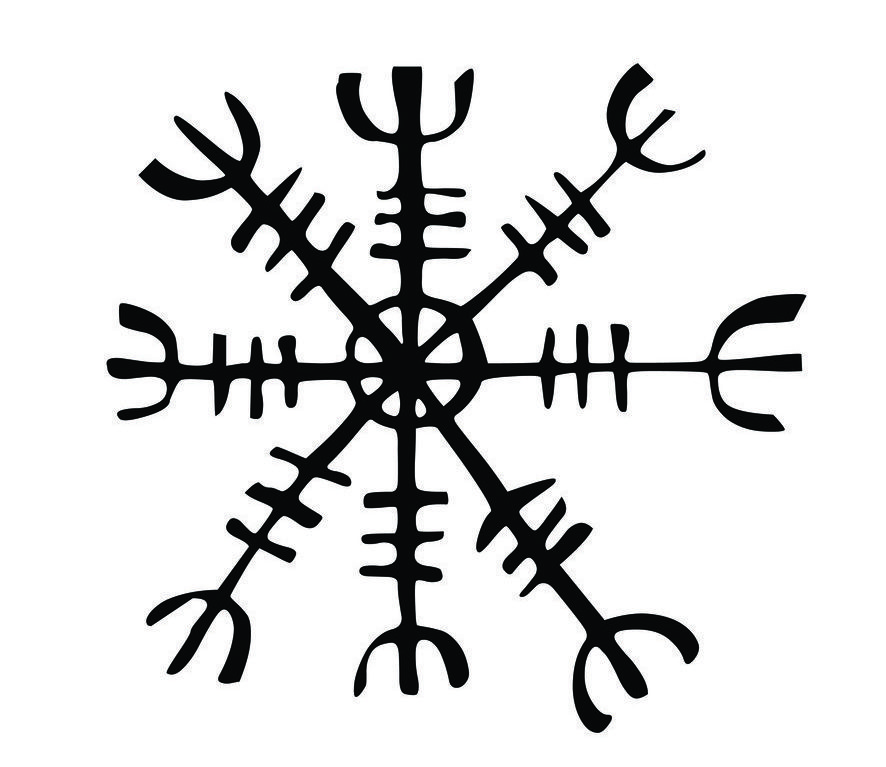Magic at the Cathedral Schools
For centuries the only schools in Iceland were at the two cathedral seats, at Hólar in the north and Skálholt in the south. At least four cases of witchcraft were associated with the latter in the second half of the 17th century. None of these was referred to as the secular courts and the punishments were never harsh.
Twice students were found in possession of grimoires and were expelled though some of them were later readmitted. One case concerns a priest who was accused by a student of having caused a sickness he felt in the presence of a girl who both of them were courting. The leniency shown to the students who were dabbling in magic is generally connected with the humanism and sensibility of the bishop, Brynjólfur Sveinsson, who was highly regarded as a scholar in Denmark and a disciple of Erasmus of Rotterdam.
At the other school, at Hólar, no records are found of cases of magic in the 17th century, but there are numerous accounts of students’ experimenting with sorcery in the 18th century. Among them are many of the historical persons whom later folk tales describe as cunning sorcerers.
Þorleifur Kortsson
The two cases of the 1650s, at Trékyllisvík and Ísafjörður, were presided over by the same sheriff, Þorleifur Kortsson, who lived in Hrútafjörður in Strandir. He later became head sheriff (“lögmaður”) in the North and West and as such, most of the cases of witchcraft that surfaced during the next two decades were referred to him.
Since the 19th century, Þorleifur has been blamed for almost single handedly having caused “the burning-times” in Iceland. However, neither his contemporaries nor the court-records confirm this view.
Sickness in Selárdalur
One of the persons who referred cases to Þorleifur Kortsson (see above) was Páll Björnsson, a clergyman at Selárdalur in the southwest of the Westfjords. Páll had studied abroad and was generally thought to be among the foremost scholars of divinity in Iceland. He was also known for his knowledge of Greek and Hebrew.
An essay of his on Icelandic nature was printed in 1654 in The Philosophical Transactions of the Royal Society of London and in French in Journal de Savants in 1675. He was also the first man to measure the exact geographical position of Iceland’s westernmost point. His most famous essay, however, was Character Bestiæ (1674), a manifesto against magic. It quotes Malleus Maleficarum but bears little resemblance to the sorcery described in Icelandic sources.
In 1669 Páll’s wife, Helga, fell ill and for a time their farm had to be evacuated because of evil spirits that made it inhabitable. Finally, it was decided that Helga’s illness had been caused by a farmhand who had wanted to marry one of her maids. Páll had him burnt with the help of his brother Eggert Björnsson, the county sheriff, along with a second man who they claimed had taught the farmhand sorcery.
Helga, who undoubtedly was psychologically unstable, seems to have had a relapse again and again until 6 persons had been burnt because of her illness and that of their sons. The last man burnt in Iceland was condemned for causing a similar illness in the daughter of Páll and Helga. Among those who suffered in connection with the family in Selárdalur was the only woman burnt during the witch-craze in Iceland. Not much is known of this case except that Þuríður Ólafsdóttir had recently moved to the area, and her dim-witted son who was burnt with her had boasted that his mother knew how to cross rivers and streams without getting her feet wet.
The case was one of several where the death sentence was confirmed by the general assembly after the culprits had been executed.
The pastor and his neighbours
The local clergyman in Skutulsfjörður (the present town of Ísafjörður in the Westfjords), Jón Magnússon, fell ill in 1654 and remained bedridden for weeks at a time, sweating and shaking and experiencing vivid hallucinations.
He became convinced that two of his neighbors, a father, and son, both named Jón Jónsson, had sent him the illness with the aid of magic. The local sheriffs reluctantly took up the case, but under considerable pressure from the reverend Jón they tried the culprits and in 1656 both of them were burnt.
The priest was awarded a large part of their property as compensation but a little later he had a relapse. He then accused a female member of the family, but this time the authorities declined. The reverend Jón wrote a book (“Píslarsaga”) to justify his claims. There he describes the illness and the strange hallucinations he suffered.
The work has considerable literary merits but must be treated cautiously as a historical document. Icelandic director Hrafn Gunnlaugsson made a feature film about the subject in 1999 named Witchcraft.
The fainting fits in Trékyllisvík
Nobody has put forward a convincing theory of what happened in Trékyllisvík, the northernmost community of Strandir, but the strange occurrences seem to have started in 1652 and continued on throughout the 17th century. In the words of one annal:
“That autumn [1652] an evil spirit or a ghost caused disturbances in Trékyllisvík. Often during the same day and especially in the church, the spirit would suddenly go down people’s throats causing belching and a feeling of overfill, but afterward they felt nothing. Virgins were more prone to this sickness than others.”
When the two-county sheriffs arrived it was soon revealed that the community suspected a certain Þórður Guðbrandsson. After repeated hearings, he admitted that he had met the devil in the form of a fox and had sent it to Trékyllisvík. During the proceedings, the sheriffs heard that two other men, Egill Bjarnason and Grímur Jónsson, were rumored to be sorcerers. After some time in custody, they both admitted having practiced forbidden magic. All three were burnt in September 1656.
In spite of the executions, the belching and fainting fits in and around the church continued, and in 1670 two inhabitants of the community were whipped harshly, first at the general assembly at Þingvellir and again in Trékyllisvík, though no charges against them could be proved and they denied all knowledge of magic.
Reports continued of the same disturbances until the last decade of the 17th century when harsh weather and a famine pushed any other concerns out of people’s minds.



